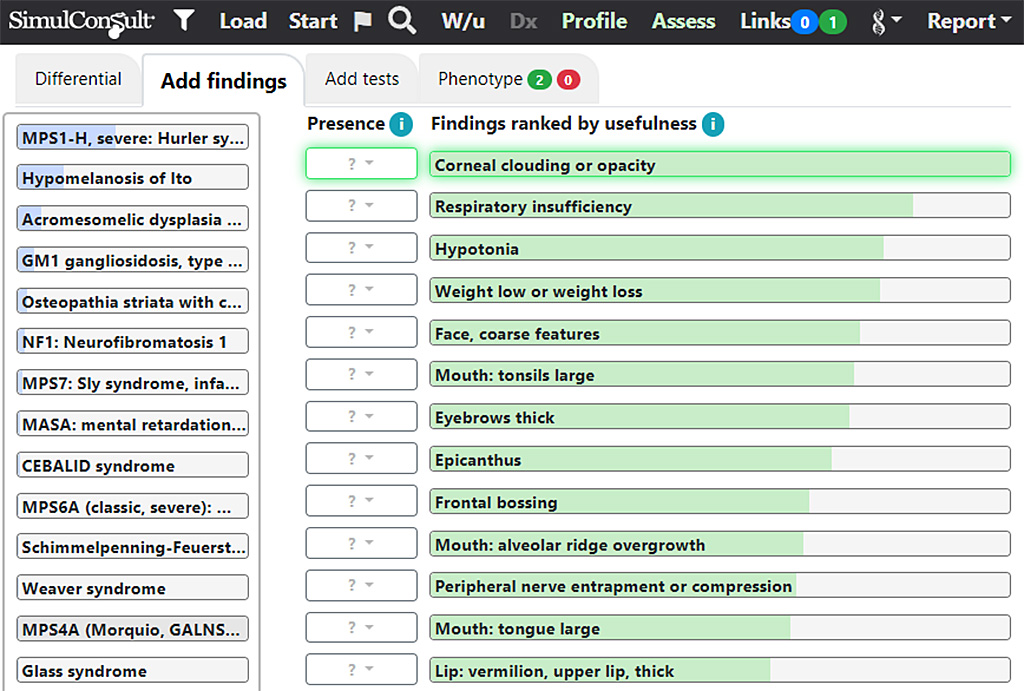It has long been known that medical diagnosis is iterative. Clinicians begin with a few findings on history, physical exam, or lab tests and consider likely diagnoses. Then, based on that “differential diagnosis” list of disease candidates, clinicians check further findings, chosen for their being useful in distinguishing among the diseases. This iterative process considers the cost of tests and the treatability of diseases.
SimulConsult supports such iterative thinking, as shown in the example below. An 8-month-old boy is known to have a very big head and a kyphotic bulge of the spine (the listing of these two findings is viewable by clicking on the Phenotype tab). Findings that can be added are displayed in the “Add findings” tab in order of usefulness (green shading). Here, corneal clouding is listed as the most useful. The clinician can indicate that corneal clouding is present or absent (if desired, a photo illustrating what corneal clouding looks like can be seen by clicking Links). Selecting corneal clouding as present changes the differential diagnosis display of diseases on the left, where probability is shown by blue shading.
Similarly, the “Add tests” tab displays useful tests to confirm the clinical diagnosis.
By displaying useful findings, SimulConsult assists a clinician in using an efficient iterative process for diagnosis.

